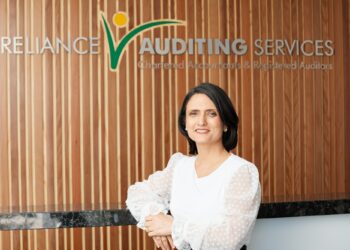What is an SMSF audit?
An SMSF audit is an independent verification of transactions, investments, and superannuation compliance. This means the auditor must independently verify the information presented by you and your accountant. It is not that auditors don’t trust your information, but they are obligated to undertake their own checks and assurance.
There are four key preparation considerations that will help keep your SMSF auditor happy.
- Documentation: Ensure you have ALL documents for the year, including bank statements, expense invoices, share documentation, etc.
- Valuations: You must consider the need to record your assets at market value each year. Our advisers can help you understand what is considered appropriate evidence, but you will need to have documentation to support your opinions or assessments about market value.
- Strategy: Make sure your investment strategy is up to date and reflects the investments and transactions of the fund. All SMSF investment strategies are required to consider the personal circumstances of each and all members, and the trustees must ensure the investment strategy is implemented as recorded during the year.
- Record of changes: If there have been changes to the SMSF memberships during the year (such as the death of a member, a divorce or separation, adding a new member, or rolling out a member), you must ensure that all decisions have been recorded and that appropriate legal documentation has been obtained to make any decisions effective.
To help you prepare for a smooth SMSF audit process, we have created a detailed checklist for gathering and collating relevant evidence or documentation. The more information provided upfront to your auditor, the less queries the auditor will have when conducting the audit. Our checklist is designed to cover most types of investments found in an SMSF, but if in doubt, ask your accountant to obtain a checklist from your fund’s auditor.
Download the SMSF audit checklist
The ATO’s hot topics for 2025
1. Valuations
The 2025 financial year is not dissimilar to other years as SMSF trustees need to ensure that assets are carried at market value each year. However, with the proposed introduction of the new Div 296 tax on balances over $3 million, asset valuations come into sharper focus for both the auditor and the Australian Taxation Office (ATO). Any unchanged valuations or significant changes in valuations are likely to attract the attention of the regulator when the annual return for the SMSF is lodged with the ATO.
When conducting valuations of any assets, the key is to clearly document the methodology that the SMSF trustees have adopted in arriving at the final valuation of the asset as of 30 June 2025. The SMSF trustees should ensure that they have clearly outlined:
- WHAT information has been considered (and ensure copies of this documentation is available)
- HOW the SMSF trustees have arrived at their conclusion (including which sources of information have the greatest weight).
Even where assets or investments are valued at nil, it will be important for SMSF trustees to be able to demonstrate that this is the appropriate market valuation.
2. Related party transactions
The ATO has been focused on audits where auditors are not obtaining sufficient appropriate evidence to support their audit file. One of the key failings has been insufficient documentation for related party lease agreements for commercial properties owned by the SMSF.
If your SMSF has commercial property that is leased back to a related party, or your own business, it is important that you have an arms-length commercial lease agreement in place. The ability to demonstrate that the lease agreement is on arms-length terms will include:
- Having a written agreement on file
- Ensuring the term of the lease agreement is in line with normal commercial arrangements
- Substantiating that the amount of rent paid is at market rates
- Demonstrating that rent is regularly reviewed and increased either in line with CPI increase or market reviews (as outlined in the lease agreement)
- Regular payment of rent (in line with the terms of the lease agreement)
- Ensuring that the terms of the lease agreement are met, including who is responsible for property outgoings and renewals of the lease agreement.
The best ‘pub test’ for whether a lease agreement is on arms-length terms, is “would you enter into the same agreement with someone you are not related to?”.
3. Private or non-listed investments
In the past few years, we have seen a surge in private equity investments – whether they are private trusts, companies, or even private debt arrangements – as trustees seek return on investment. SMSF auditors have come under scrutiny from the ATO with regard to obtaining appropriate documentation to support these investments.
Auditors require the following documentation as a minimum for investments in private companies or trusts:
- Signed financial statements and income tax returns
- Share or unit certificates (or copies of share or unit registry documentation)
- Documentation to support any purchases or sales of units/shares during the year
- Documentation to support key assets of the private entity (including bank statements, term deposits statements, investment summaries or portfolio reports, property valuation documentation and property title searches)
- Documentation to support key liabilities of the private entity (including loan statements)
- Documentation to support income and expenses of the private entity (including investment report, property management reports or lease agreements and invoices for significant expenditure).
If you’re not sure what will be required by your auditor, your accountant or adviser can obtain a specific checklist or guidelines on their requirements.


